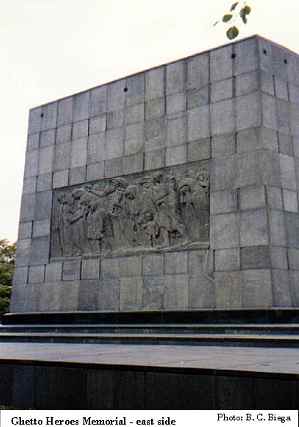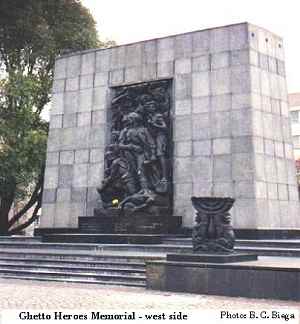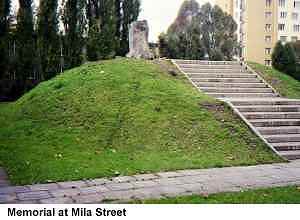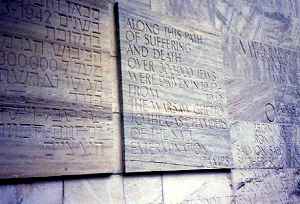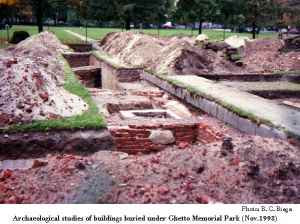 |
WARSAW (WARSZAWA) PHOTO GALLERY GHETTO MEMORIALS |
Bill Biega's Photographs |
|
Go immediately to photos. Immediately after the capture of Warsaw by the Nazi invaders, in September 1939, repressions started against the city's 320,000 Jews, and by war's end the majority had perished. By the spring of 1940 a Ghetto was created by building a wall, see map. This encompassed the district populated mainly by poorer Jews, characterized by the shop signs written in Yiddish, centered on Nalewki Street. The Christian population of some 60,000, that also lived in this area, was forced to move out. Their place was taken by 200,000 Jews from other areas of Warsaw and other towns in Poland, mostly professionals, artists and prosperous business people. By the end of 1942, 90 percent of the entire Ghetto population of over 500,000 had died of disease, summary executions, or had been shipped from the Umschlagplatz at a railroad siding on Stawki Street to the death camps Treblinka and Majdanek. Those who still remained decided to fight till the bitter end in a fiery battle which started April 19, 1943, on the eve of Passover. By mid May the entire area was a smoking ruin. All of the 50,000 perished in the fighting, or were captured and transported to the death camps were most of them died. Only a very few managed to escape through the sewers to the area outside the Ghetto. For more information see sources.
Return to Top of page.
FOR MORE WARSAW PHOTOS, see:
All photos are ©1998 B. C. Biega, all rights reserved. Send me an email if you would like any photo full size. |
|
Return to Home Page.
Last update May 2002 |
